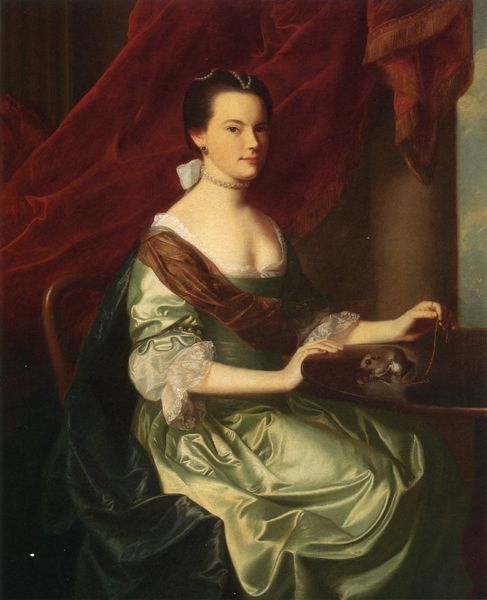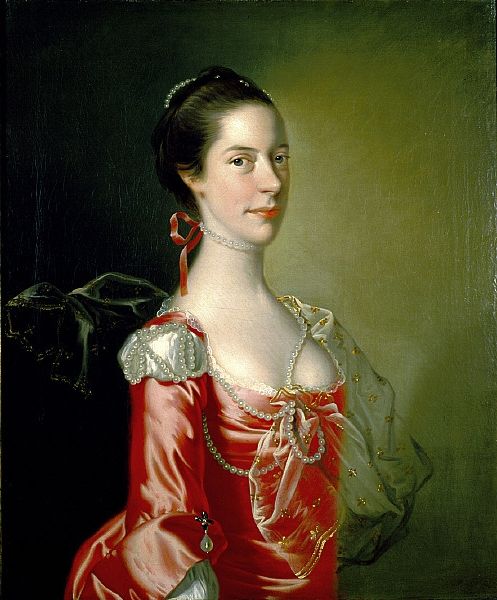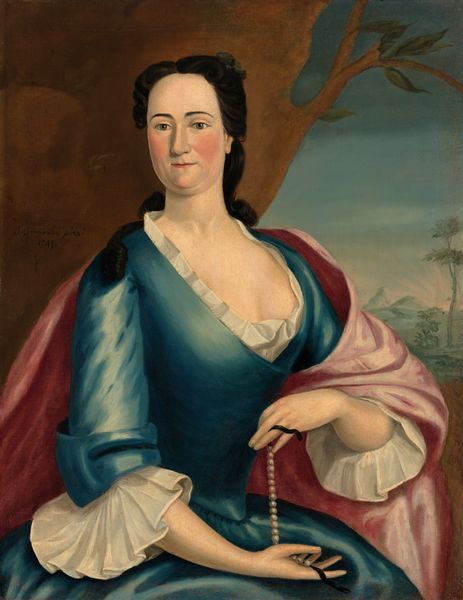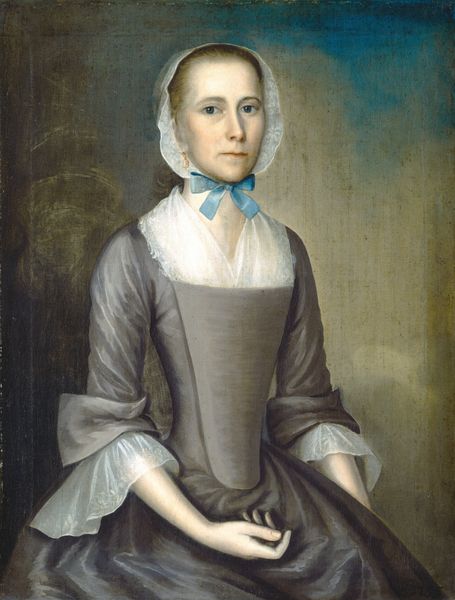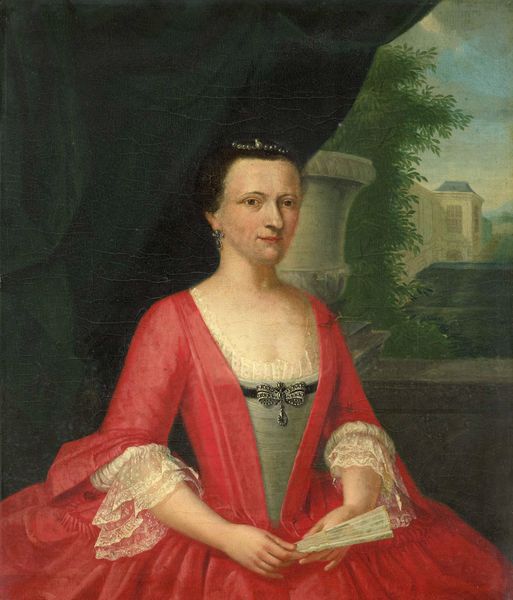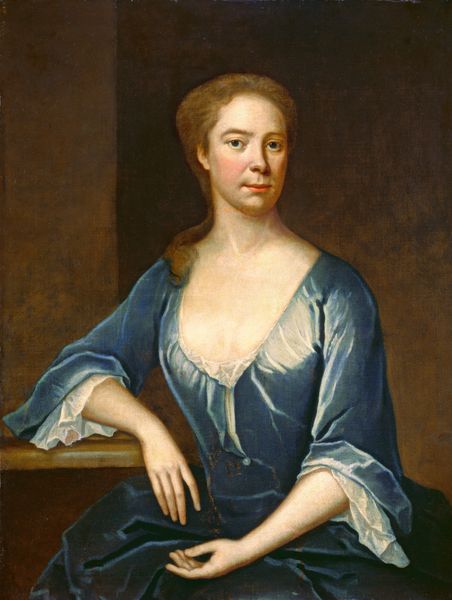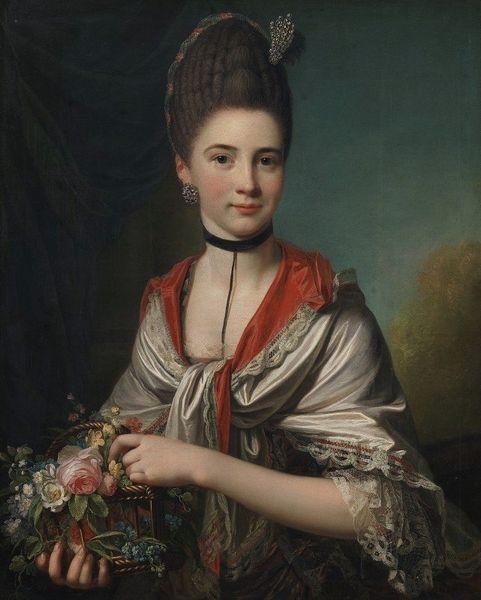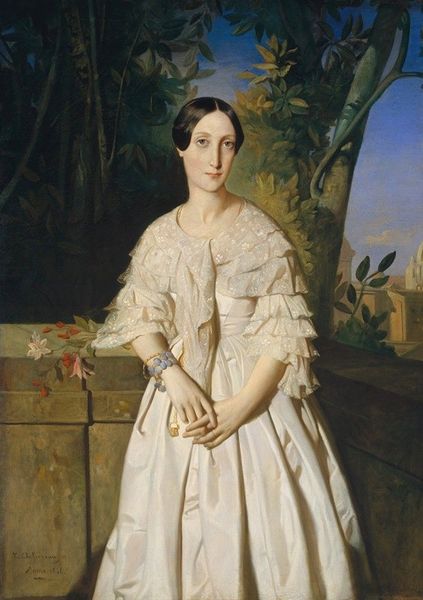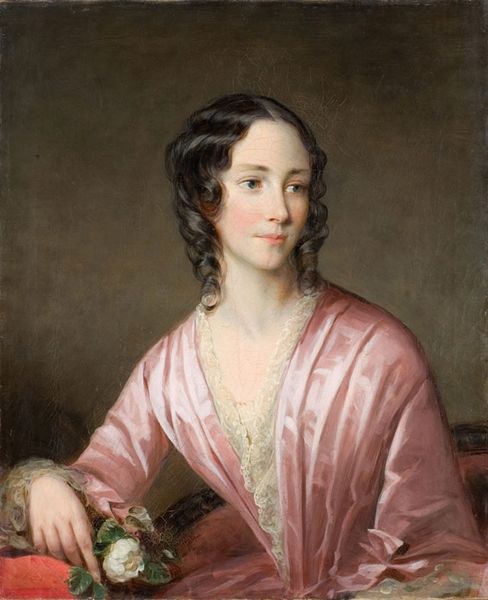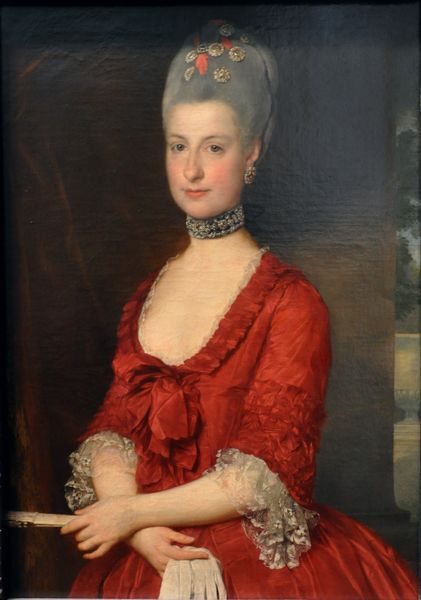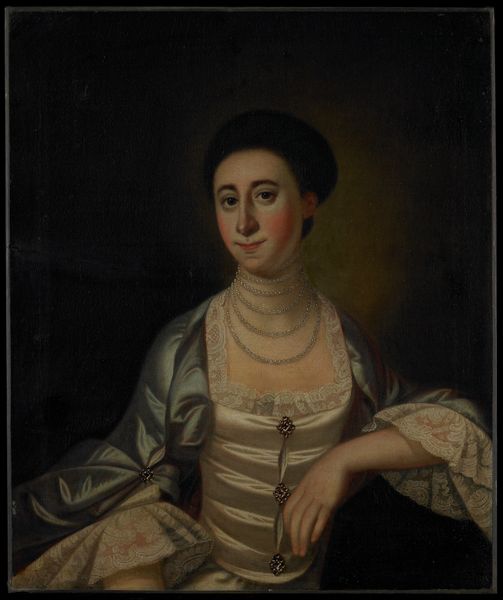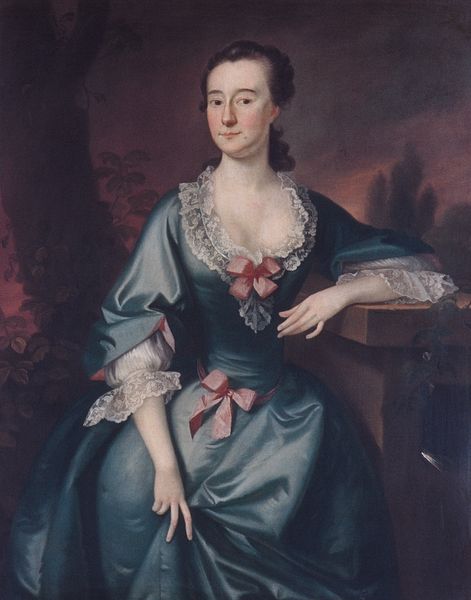
painting, oil-paint
#
portrait
#
painting
#
oil-paint
#
figuration
#
academic-art
#
realism
#
rococo
Dimensions: 88.9 x 71.12 cm
Copyright: Public domain
Curator: John Singleton Copley, a prominent painter in colonial America, rendered this "Portrait of a Woman" around 1755. Isn’t she something? My immediate reaction is quiet serenity, almost like gazing into a dream. What do you make of it? Editor: The muted palette certainly contributes to that feeling, but I notice first how rigorously structured the composition is. There’s a clear hierarchy—the sitter dominates, her figure forming a stable, almost pyramidal shape. The landscape seems secondary, functioning mainly as a backdrop. Curator: Precisely! I sense a real sensitivity to capturing this woman’s inner self. It is interesting how Copley seems to anticipate a sort of refined inner glow, yet also almost dares you to imagine more than what the subject reveals. She’s holding flowers, too, in that lovely little hand of hers, delicate hints of a garden’s bounty. Editor: That’s true. However, those symbols and accessories fulfill specific compositional roles. See how the floral arrangement guides the eye back into the center of the canvas? Or how the sheen on her satin gown echoes the highlights in her face, linking figure and material? Curator: I see how everything seems intertwined. But I think there's a hidden melancholy, the weight of the unseen within her gaze, and perhaps even the coming change for the colonies themselves on the cusp of great transformations. Copley gives you just enough to trigger those thoughts without overplaying the somber tones. It makes you wonder about her life. Editor: Perhaps. Yet, that melancholy could equally derive from the subdued tonality Copley favors. It is remarkable how Copley carefully organizes color and shape. By doing so, I believe it helps communicate, on its most simple form, the grace and refinement associated with elite social status. Curator: I love how art makes you ask questions and feel deeply—especially when you view something familiar from a completely fresh perspective. Editor: Indeed. Art teaches us to find those hidden codes or discover new avenues of thought.
Comments
No comments
Be the first to comment and join the conversation on the ultimate creative platform.

